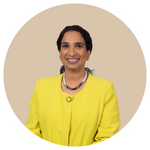Secondary Infertility | Difficulty falling pregnant the second time around

Dr Gayatri Borude, Fertility Specialist and Clinical Director at Adora Fertility’s Perth Clinic explains how secondary infertility can affect those who have previously had a baby without issue.
What is secondary infertility?
You might not have worried about your fertility if you’ve fallen pregnant and had a baby previously. It may come as a shock if you are struggling to conceive a second child. But millions of couples experience secondary infertility despite not having any fertility challenges before.
So, what is secondary infertility? Secondary infertility occurs when you can’t become pregnant or carry a baby to term after you’ve already had a baby without any fertility or pregnancy complications.
While primary infertility is having trouble conceiving when trying for your first baby, secondary infertility can occur with second or even subsequent conception attempts. Signs of secondary infertility include if you have been trying to fall pregnant for 12 months and are aged under 35 years old or if you are over 35 years and have been trying for a baby for six months.
The chances of secondary infertility are more common than you might think. Women are generally having their first babies older than previous generations and risk facing age-related fertility challenges later on.
How common is it?
It is estimated that about one in six Australian couples of reproductive age experience fertility challenges and more than one in ten women experience secondary infertility. Secondary infertility is a common condition.
Research has suggested that women who have a caesarean section birth with their first child may have more difficulty becoming pregnant a second time, although scientists caution that it is difficult to link a c-section birth to subsequent infertility when other factors such as age can be at play.
So how common is secondary infertility after a c-section?
One US study in 2020 found women who delivered their first baby via c-section had lower rates of conception after unprotected intercourse in the three years following the birth than women who delivered vaginally. Fewer women who had a c-section also went on to have a second child.
One potential complication of c-section delivery can be an infection of the lining of the uterus. C-section scar defects are another potential complication which, if undiagnosed, may also affect the chances of falling pregnant in the future.

What are the causes?
So, what causes secondary infertility? Secondary infertility has many of the same causes as primary infertility and can involve both factors with the male (sperm production) or the female (eggs). In fact, it’s estimated that two in five couples have fertility challenges due to a sperm problem and another two in five couples experience problems due to the woman’s reproductive system. Other times, there is no obvious cause.
The causes of secondary infertility in females can be a range of issues including:
- age – fertility starts to decline after age 30 and the decline accelerates in your mid-30s
- hormonal disorders
- endometriosis or a problem with ovulation
- damaged or blocked fallopian tubes
- complications from a past pregnancy or surgery
- health – weight and smoking.
Factors that can cause secondary infertility in males include:
- low sperm production or sperm quality
- age, weight
- use or steroids or particular medications
- injury to the reproductive system.
How to cope with secondary infertility
Secondary infertility can come as a surprise. It can be difficult to understand or cope with secondary infertility when you had no troubles conceiving your first baby.
Whenever it occurs, infertility can be distressing and emotional as, despite your best efforts, the outcome is uncertain. In some cases, there is no clear “fix”. The best place to start if you are concerned about your fertility is your general practitioner (GP), who can provide you with advice and support and, if required, a referral to a fertility specialist to investigate your condition further. GPs and specialists can also provide advice about fertility counsellors to help you cope with secondary infertility and the emotional challenges it can bring.

How to overcome secondary infertility
Taking stock of your health status and your conception planning can be a good place to start when dealing with secondary infertility. Doctors recommend having sex two to three times a week if you are trying to get pregnant. It’s also a good idea to track your ovulation and your most fertile times.
However, if you have not conceived after 12 months of trying and you are aged under 35 or within six months and you are aged over 35, it’s best to see your GP.
Deciding how to treat secondary infertility generally depends on the nature of the potential problem your specialist has identified. Initial laboratory tests can include taking samples or blood to check hormone levels, urine to check ovulation or semen to check sperm levels and quality.
For women, imaging tests can include ultrasounds to check the health of the reproductive system.
Just like for primary infertility, there are many potential treatments for secondary infertility depending on the potential cause including medication, surgical procedures or assisted conception.
For some couples, specialists may recommend Assisted Reproductive Technology to help treat secondary infertility. Using In-Vitro Fertilisation or IVF for secondary infertility is one option along with intra-uterine insemination and intracytoplasmic sperm Injection.
IVF success rates for secondary infertility specifically are not widely published, but data from Australia and New Zealand shows IVF success rates overall in Australia are improving. Across the last decade, IVF success rates have improved 18 per cent[1]. Researchers at UNSW studied IVF success rates in Australia and New Zealand and found in women aged 35–39, the live birth rate per cycle went from 19 per cent to 23 per cent over the past ten years. In women aged 40-44, the live birth increased to 10 per cent overall – a rise of 27 per cent[2].
If you’re struggling to conceive your second child, we can help. Please Contact Us. Adora Fertility has clinics in Sydney, Melbourne, Brisbane and Perth. If you would like to speak to a Adora Fertility expert in more detail, please find the closest location here

About Dr Gayatri Borude
Fertility Specialist & Clinical Director MBBS MD DNB FRANZCOG M Rep Med
Dr Gayatri Borude is a member of The Royal Australian and New Zealand College of Obstetricians and Gynaecologists and Fertility Society of Australia (FSA).
She is skilled in all aspects of assisted reproduction and IVF and has over 17 years’ experience in Obstetrics and Gynaecology.
Dr Borude obtained her Master’s Degree in Obstetrics and Gynaecology from NTR University of Health Sciences India in 2002 with two gold medals for obtaining the highest marks in the University and State. In 2003, she went on to obtain the Diplomate of National Board of Examinations (OBGYN) from New Delhi, India. After migrating to Australia in 2006, she obtained her Fellowship in Obstetrics and Gynaecology from RANZCOG in 2010.
She completed her Masters in Reproductive medicine from University of New South Wales in 2014.
She joins us with extensive experience in IVF and ART. Dr Borude offers comprehensive care for all types of female and male infertility including IVF, ICSI and surgical sperm retrieval. She has a special interest in minimal invasive surgery and has received advanced training in laparoscopic surgery culminating in Level 5 laparoscopy skills and offers a range of complex hysteroscopic and laparoscopic procedures.



